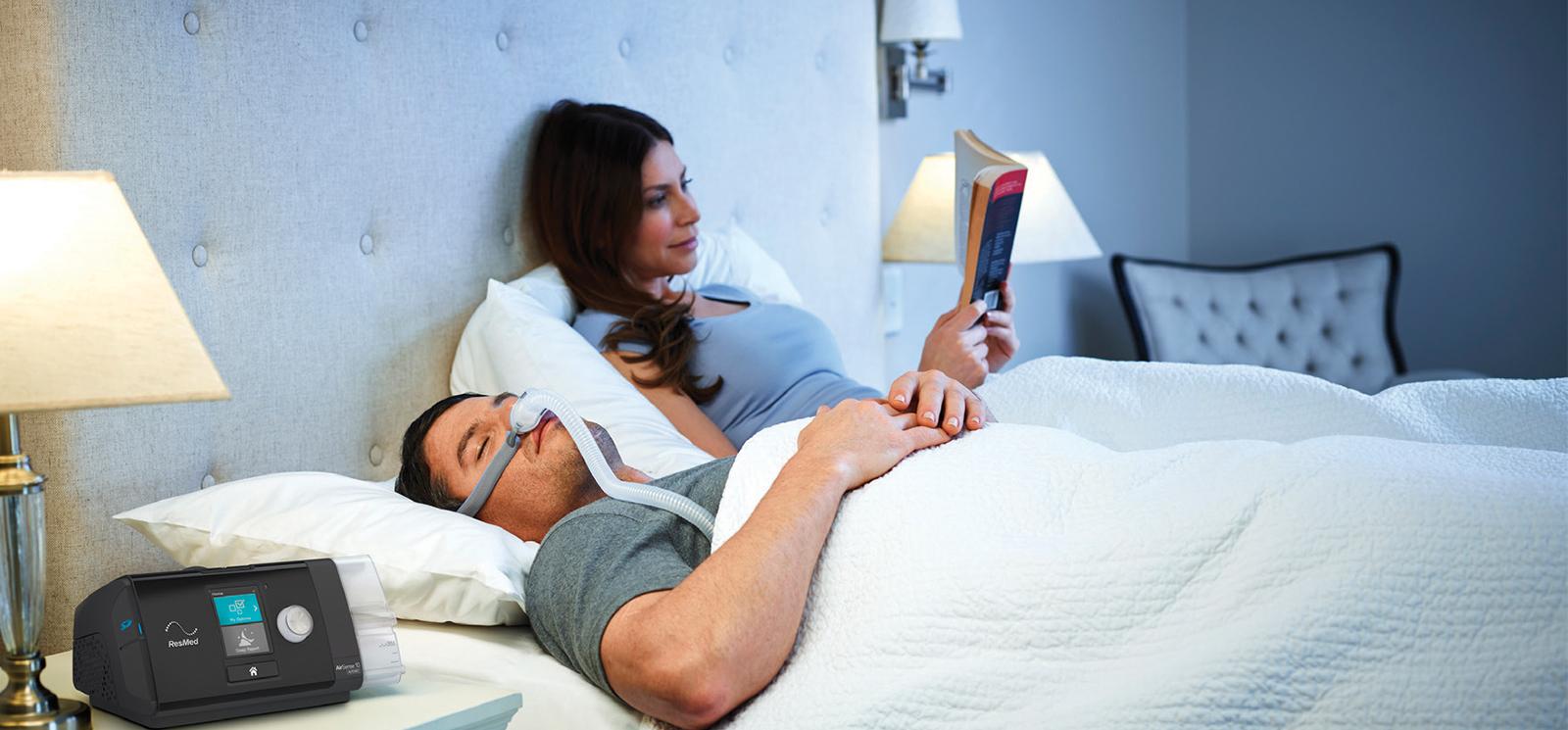The Role of Medical Technology in Quality of Life - Sleep Apnea
Sleep apnea is a high-cost chronic condition that affects 1 in 4 American adults.1Roughly 85% of cases are undiagnosed.2
SLEEP APNEA CAUSES YOUR BODY TO STOP BREATHING WHILE YOU SLEEP, BECAUSE OF:
- A blocked upper airway, known as obstructive sleep apnea (OSA); or
- The brain stops sending signals to breathe, known as central sleep apnea (CSA).
UNTREATED SLEEP APNEA IS A POTENTIALLY FATAL CONDITION WITH HARMFUL SHORT AND LONG TERM EFFECTS:
- A 15-fold increase in traffic accident risk3 costing Americans a total estimated $15.9 billion/year;4
- Increased work disability claims, absenteeism and presenteeism (showing up to work tired); and5
- Increased risk of life-threatening diseases like high blood pressure,6 heart disease7 and type 2 diabetes.8
SLEEP APNEA IS TREATABLE
Continuous positive airway pressure (CPAP) is a bedside machine that gently delivers pressurized air through a mask to keep your upper airway open and help prevent apneas. That leads to:
- Uninterrupted, restorative sleep;
- Improved daytime energy, alertness, and mood;9and
- Up to thousands of dollars in health care savings. In one analysis, people saved an average $6,000 in both the first and second years on CPAP.10
[1] Peppard PE et al. Am J Epidemiol 2013
[2] Young T et al. Sleep 1997
[3] Horstmann S et al. Sleep 2000
[4] Sassani A et al. Sleep 2004
[5] Sjösten N et al. Chest 2009
[6] Lavie P, Herer P and Hoffstein V. Br Med J 2000
[7] Sharar E et al. Am J Respir Crit Care Med 2001
[8] Aronsohn RS et al. Am J Respir Crit Care Med 2010
[9] Breus MJ. WebMD 2006
[10] Hoffman B et al. J Occup Environ Med 2010
